Automation: What’s next and how will it alter the role of business leaders?
Note: This content was originally published by the FT Future Forum.
Automation of workflow is changing the workplace as dramatically as the machines of the Industrial Revolution changed the factory floor. According to the 2021 Gartner Board of Directors survey, over 69 percent of boards of directors demanded a path to accelerated growth and operational excellence, with 65 percent looking to increase the pace of digital business.
If anything, workflow automation is rapidly becoming a critical must-have capability in business in order to thrive and scale efficiently; not merely an essential survival tool for businesses. Those quick to implement have been able to scale with greater efficiency and the victors will be those who automate their workflow faster than those that don’t.
Understanding and harnessing the big data provided by these new technologies is proving essential for informing strategic planning. The data derived from automated workflow processes is invaluable to helping businesses become more pre-emptive and predictive versus being reactive as they are today. So, what happens next and how must business leaders adapt?
Democratization of automation; converging platforms
Industry leaders realize that technology is at its best when it accelerates businesses – no one wants to be impeded by it. As the appetite for workflow automation swells, a lot of the focus will be on ensuring that automation supports those who use these new business insights and tools. Within capital markets, for instance, traders across asset classes are benefiting from the application of intelligent smart automation such as robotic process automation (RPA), artificial intelligence (AI), and machine learning (ML), in turn removing siloed operations across the trade lifecycle.
The rapid uptake is understandable: the benefits of workflow automation are endless — improved decision making, a competitive advantage, liberating us from high-frequency, low-impact repetitive tasks, increasing the cognitive capacity of your business so that your businesses can scale as you simplify complex processes—the list goes on. Once a critical mass of complex processes has been simplified, it becomes apparent that the next challenge is interoperability between business areas in any company. But what does all of this mean for corporate leadership?
Looking through the right lens
Gartner’s survey found that 86 percent of respondents deemed technology as having a transformational role in addressing strategic business priorities. As we know, within a workforce there are two types of roles: analog and digital. New technology puts greater emphasis on the latter, and an opportunity for first principal thinkers to reduce the necessity for the former by automating inefficient and error-prone manual processes. Workflow automation enables a business to free-up their workforce’s cognitive capacity and tackle more complex and interesting higher-value work, gain greater business insights and liberate you to spend more time engaging, learning, and partnering with clients.
To a few, workflow automation is synonymous with disruption. This minority, however, are looking at automation through the wrong end of the telescope. As is the case with any change, business leaders have a grander role to play—mainly, around influencing and changing mindsets; how they think, act, and operate, starting with their own. As workflow automation redefines how we’ve traditionally worked, there needs to be a balance of the roles played by humans with the decisions supported by next-generation business analytics.
With menial tasks becoming increasingly automated, business executives have more time to focus on their company’s real needs, from the minutiae and tactical low-impact to the strategic and high-impact. New technology replaces soul-destroying jobs and transforms business activity with new roles of much greater value to both the employee and business alike. Leaders are able to think more strategically by understanding their company’s strengths and weaknesses, as workflow automation’s byproduct delivers new business superintelligence. With new superintelligence powers, a business can operate with levels of agility never seen before.
Leading with intention
With the increasing use of technology and the advent of workflow automation, leaders have a responsibility to automate non-lean analog workflow processes if they want to scale efficiently as they grow their businesses.
Many business leaders are concerned with the question: ‘What’s going to change for my business in the future?’ We need to invert this and ask instead, ‘What’s not going to change?’. Leaders need to study the permanent needs of a business and their employees. For example, for Amazon.com, their three core business principles are likely to be something like more products, cheaper prices, and efficient delivery. What are yours? No matter how much a company scales or evolves, this question of ‘what’s not going to change’ will remain unaffected. Thus, it’s vital to understand the permanent needs that your company must satisfy in order to make the most out of what workflow automation can offer.
In the coming years, automation and its increasingly easier access to big and insightful data should be a catalyst for imaginative leaders to solve the difficult business challenges of the future.
Note: This content was originally published by the FT Future Forum. For a PDF version of the article, click here.
Discover what ION can do for you
With the increasing use of technology and the advent of workflow automation, leaders have a responsibility to automate non-lean analog workflow processes if they want to scale efficiently as they grow their businesses. Contact us to get started.


